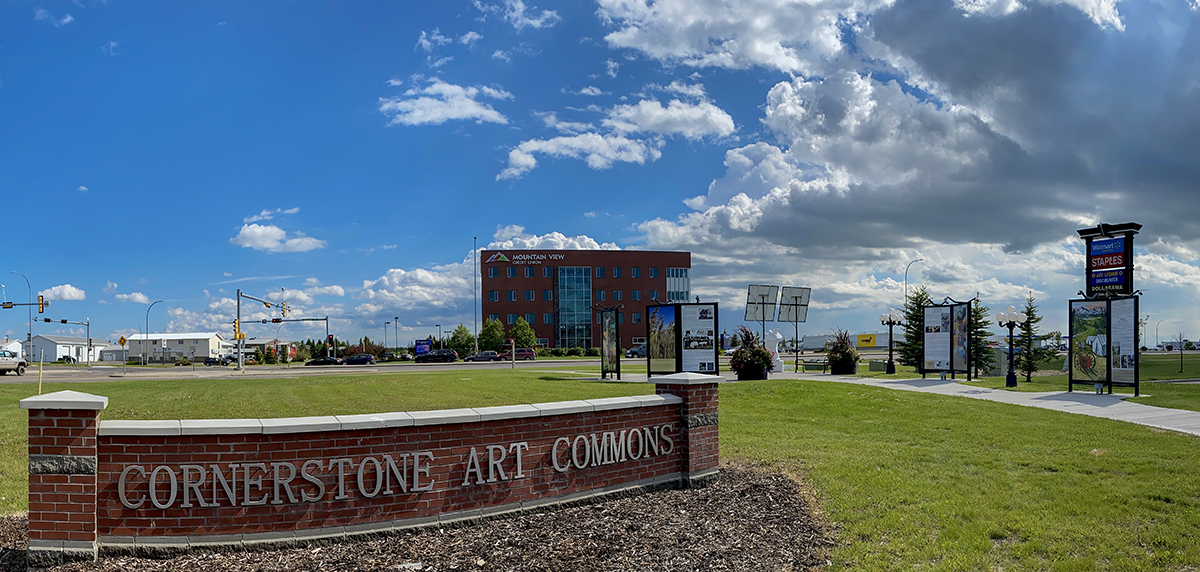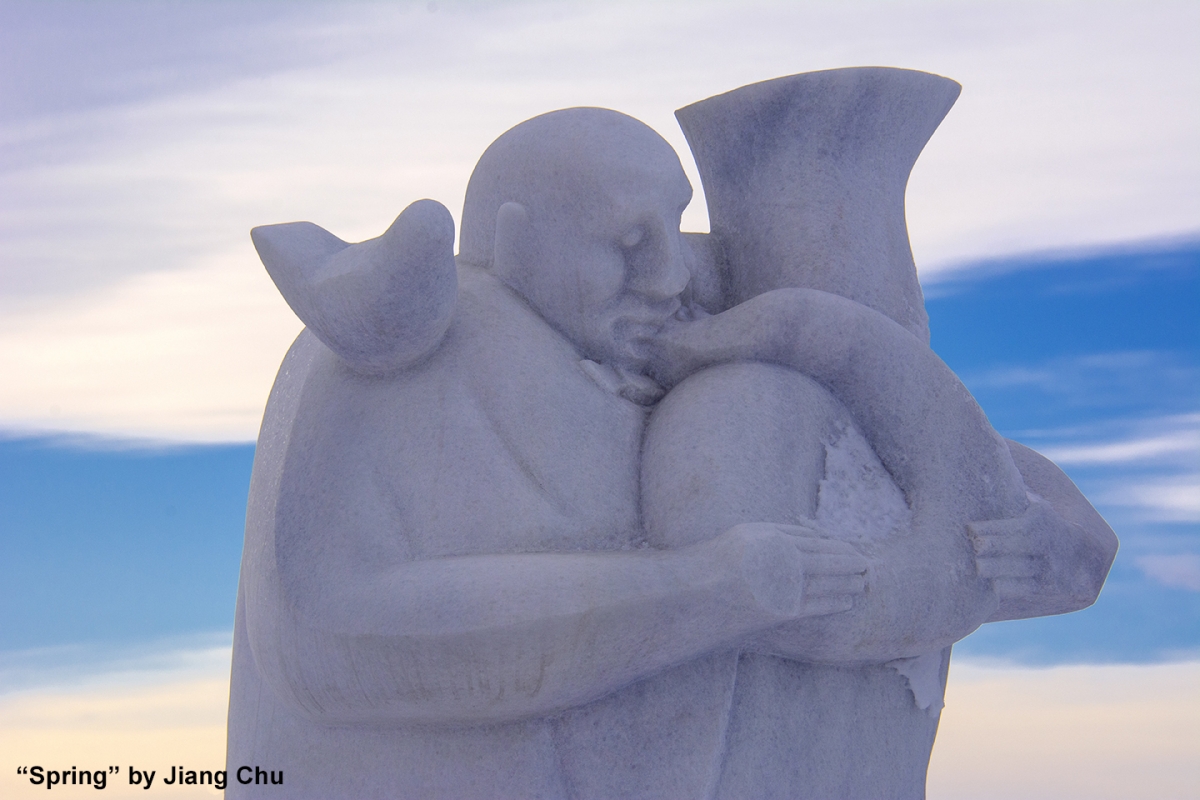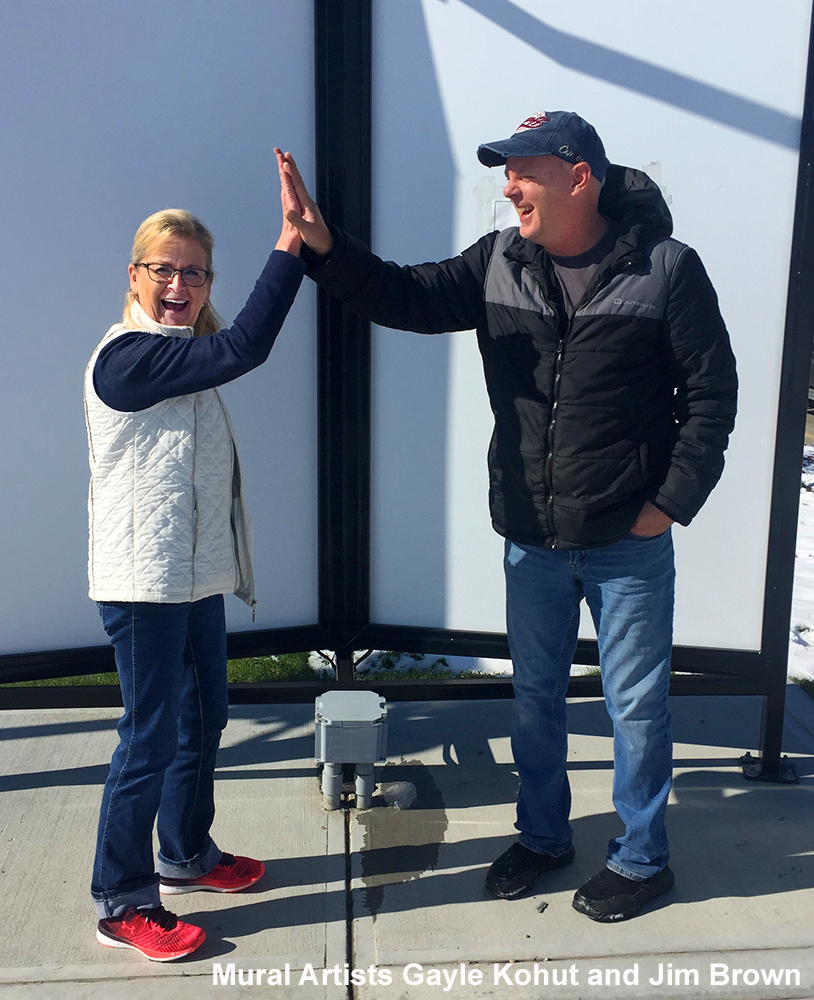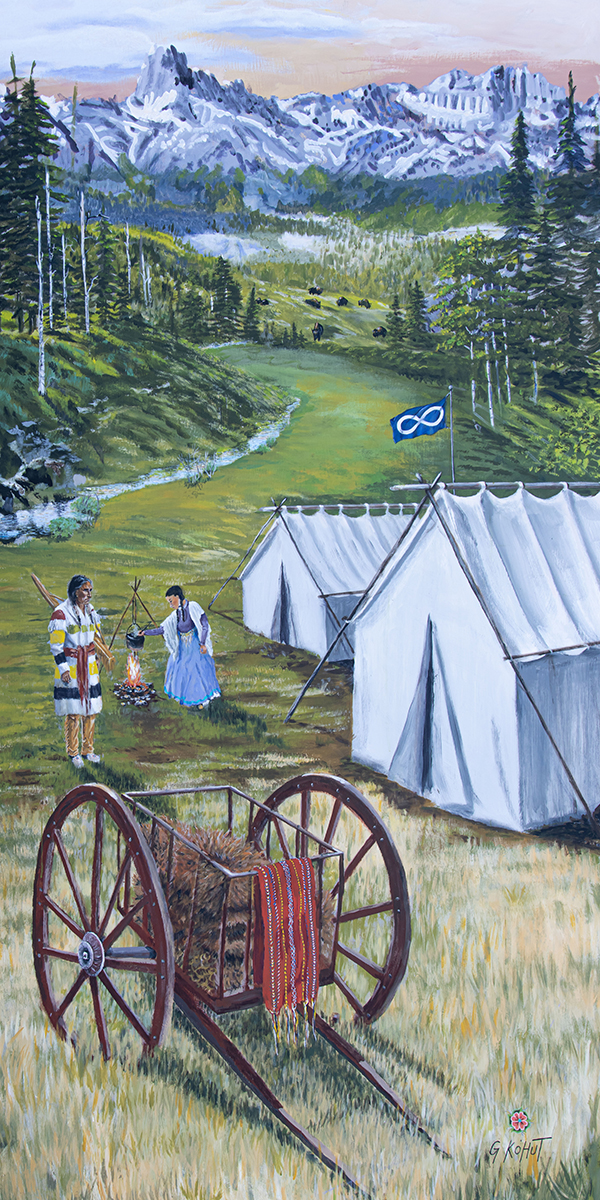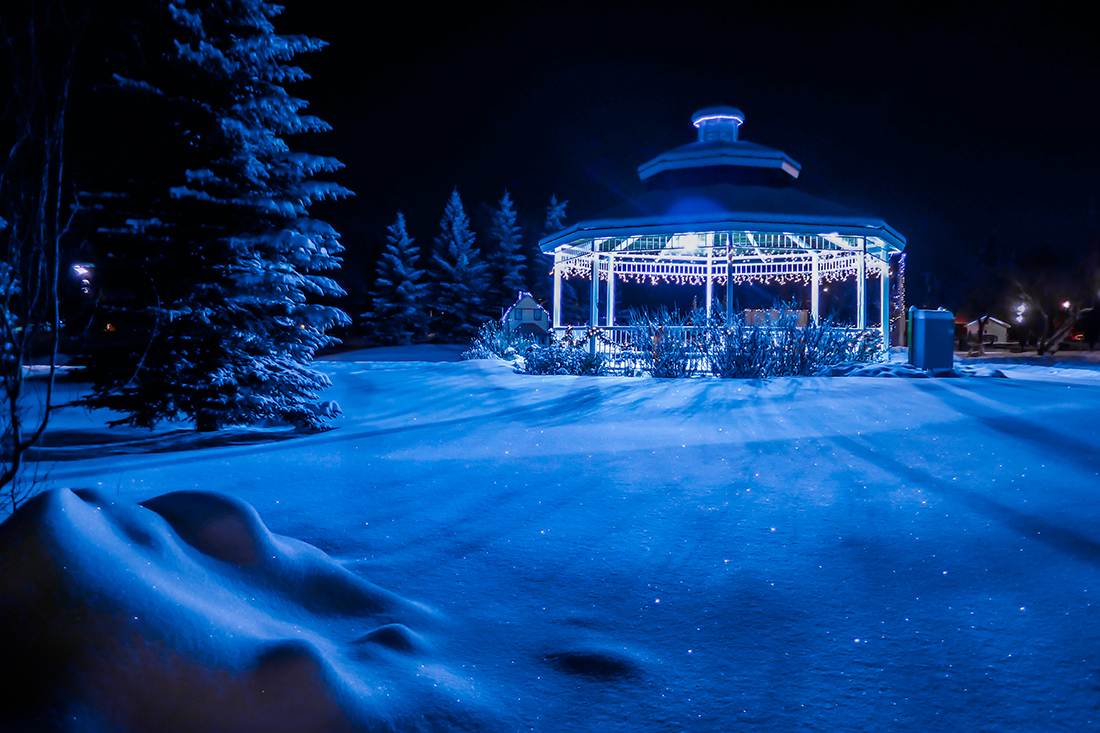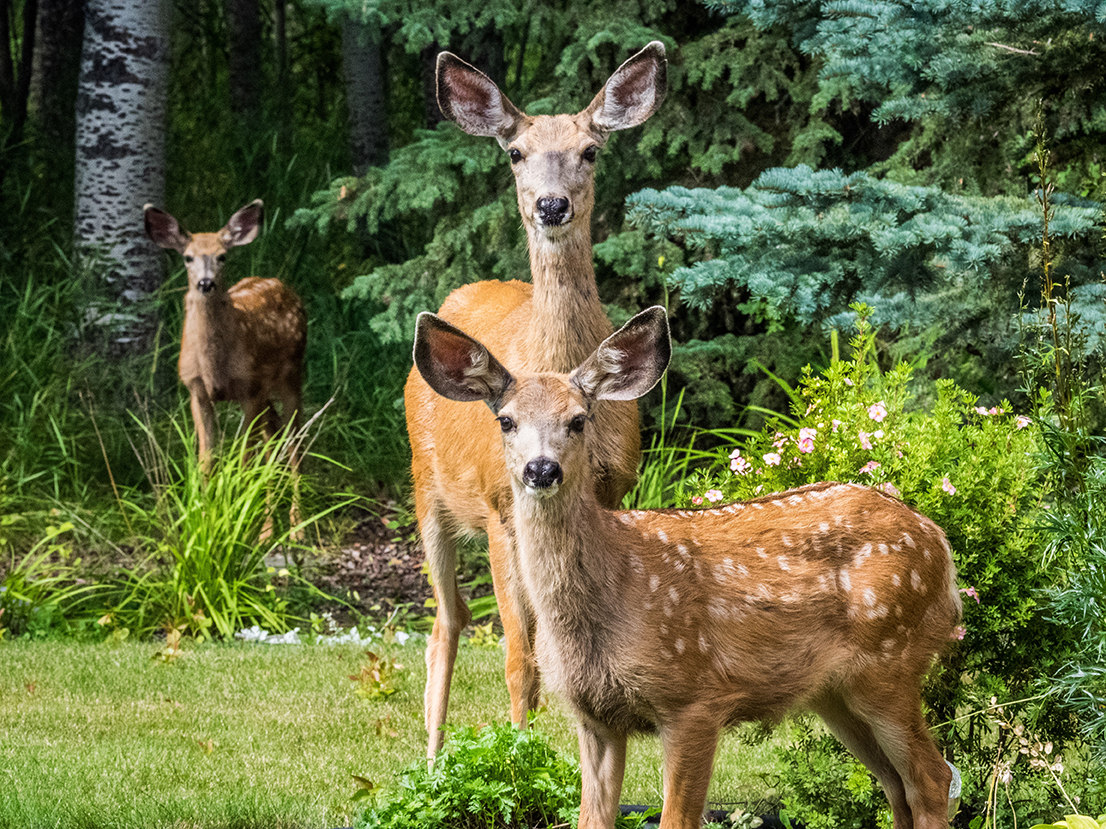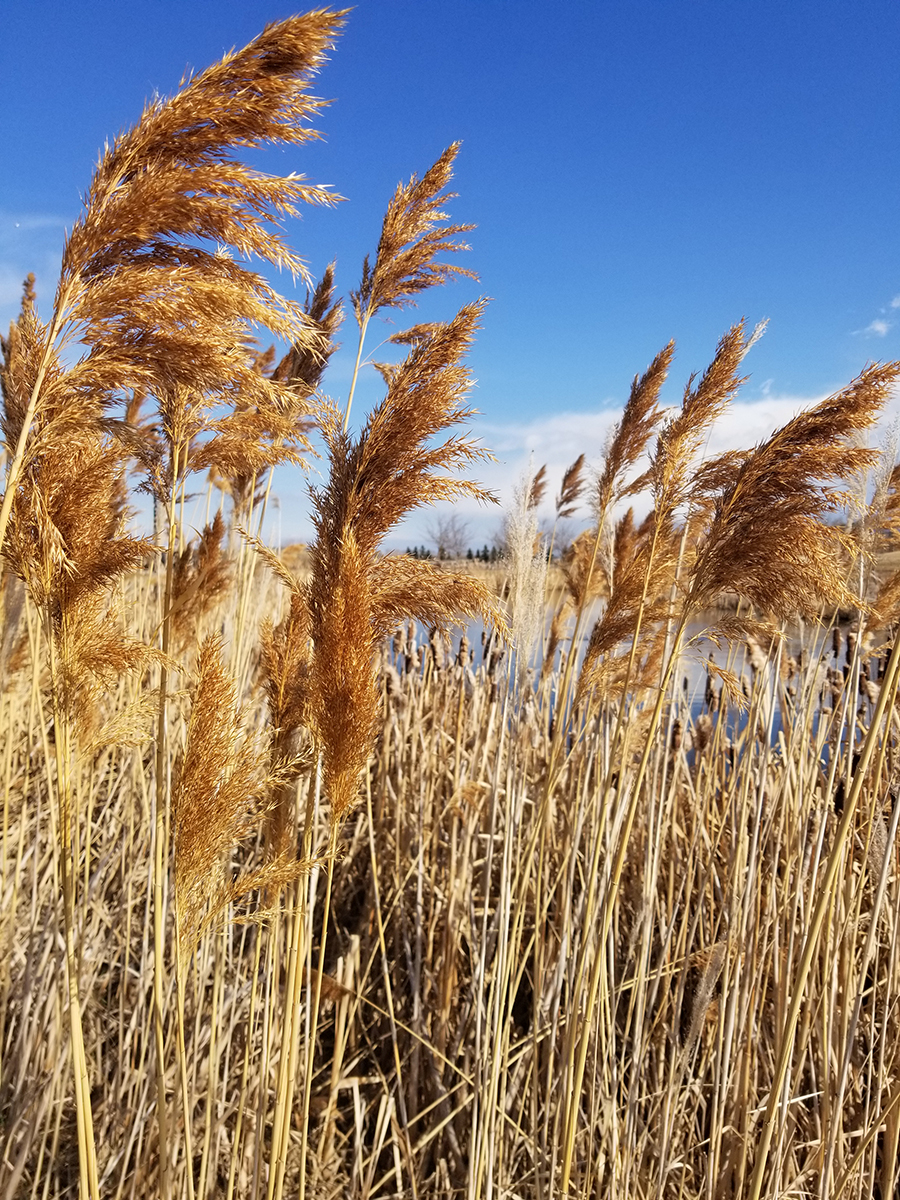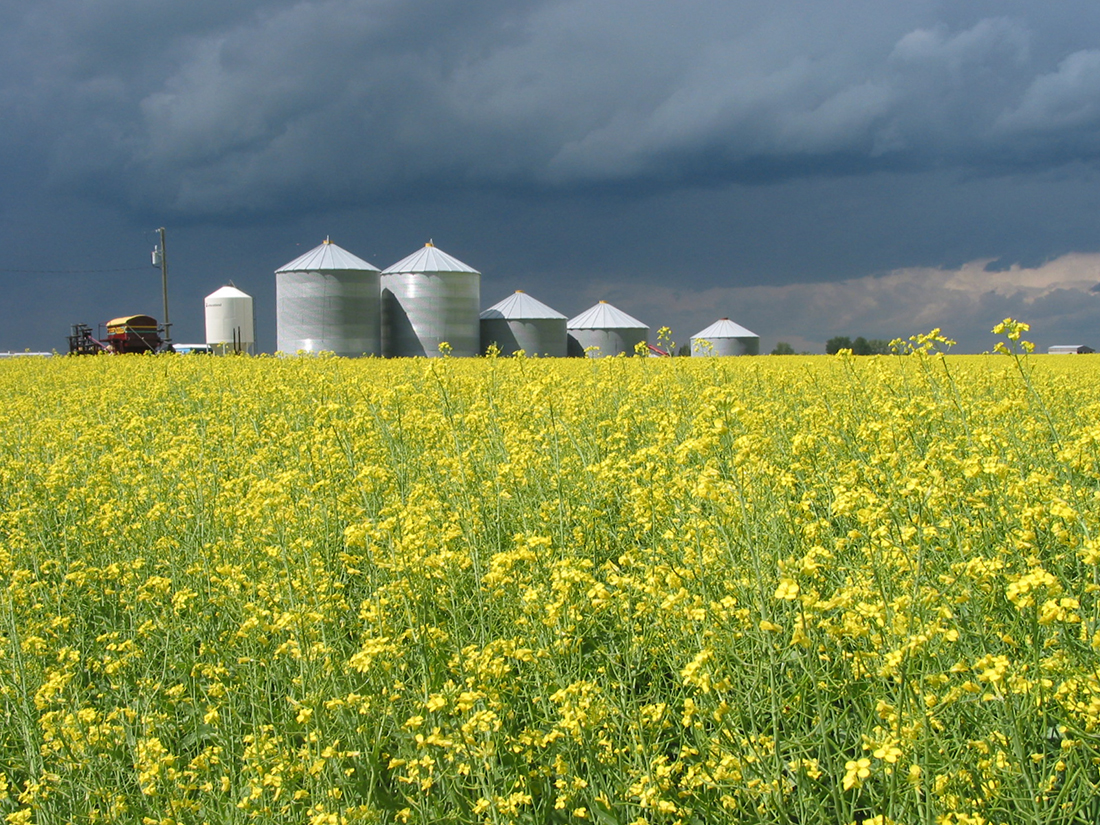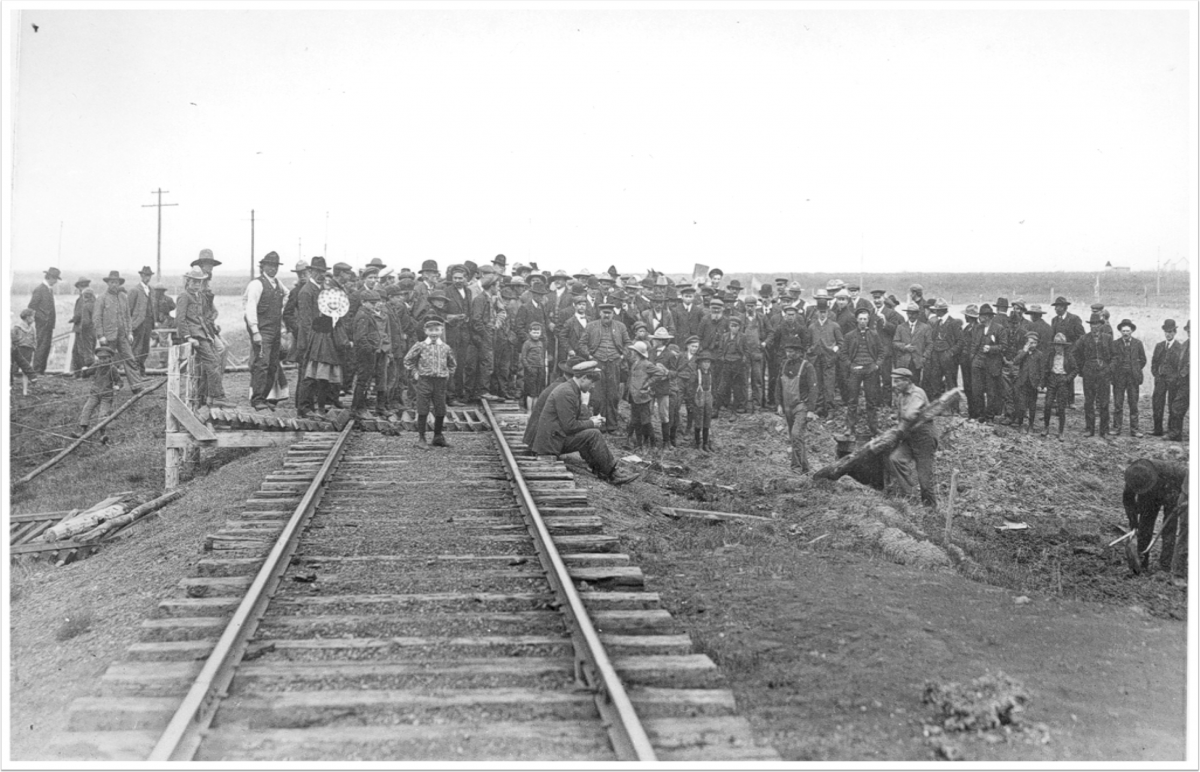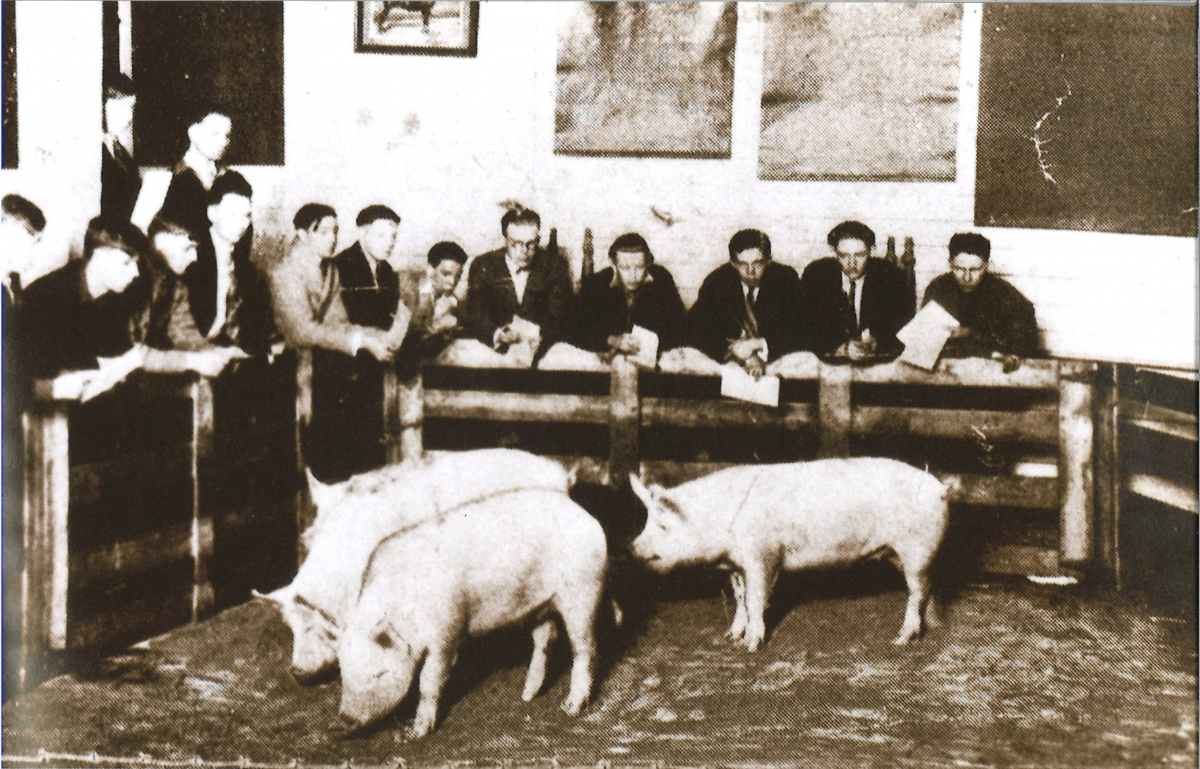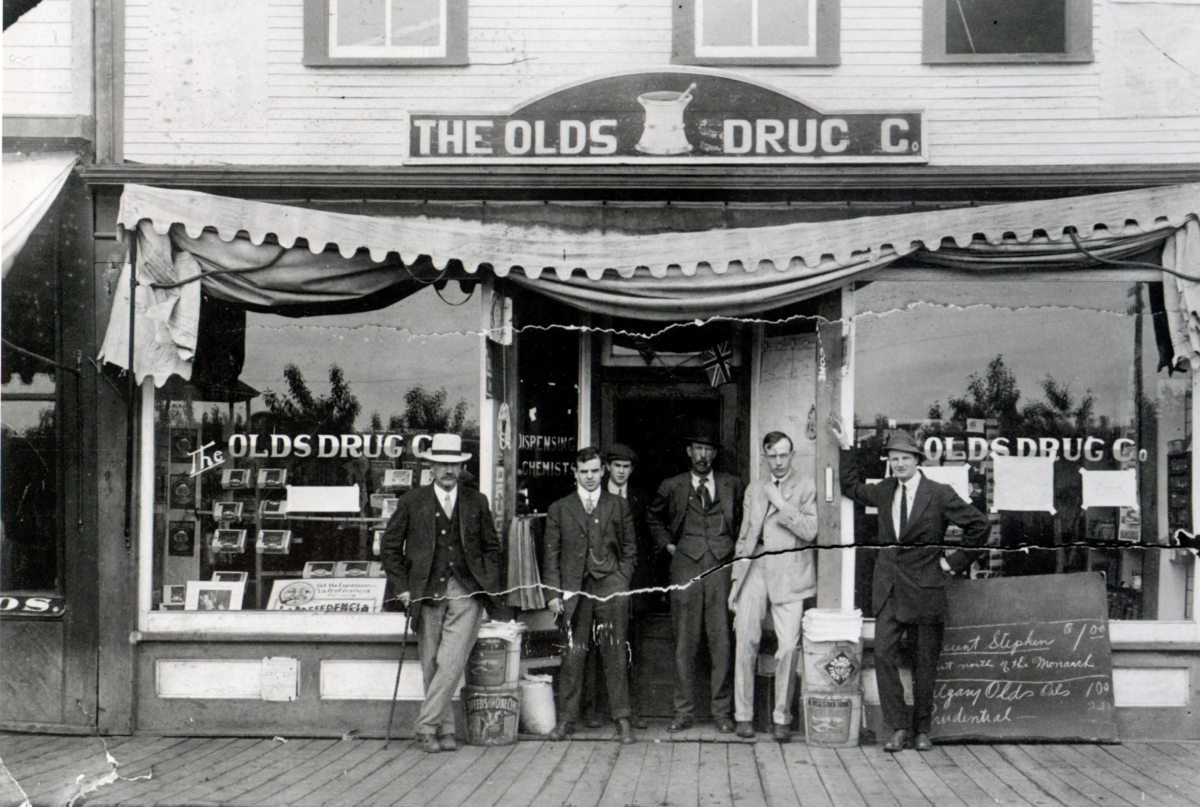Artist: Jim Brown
Medium: Exterior Acrylic Latex
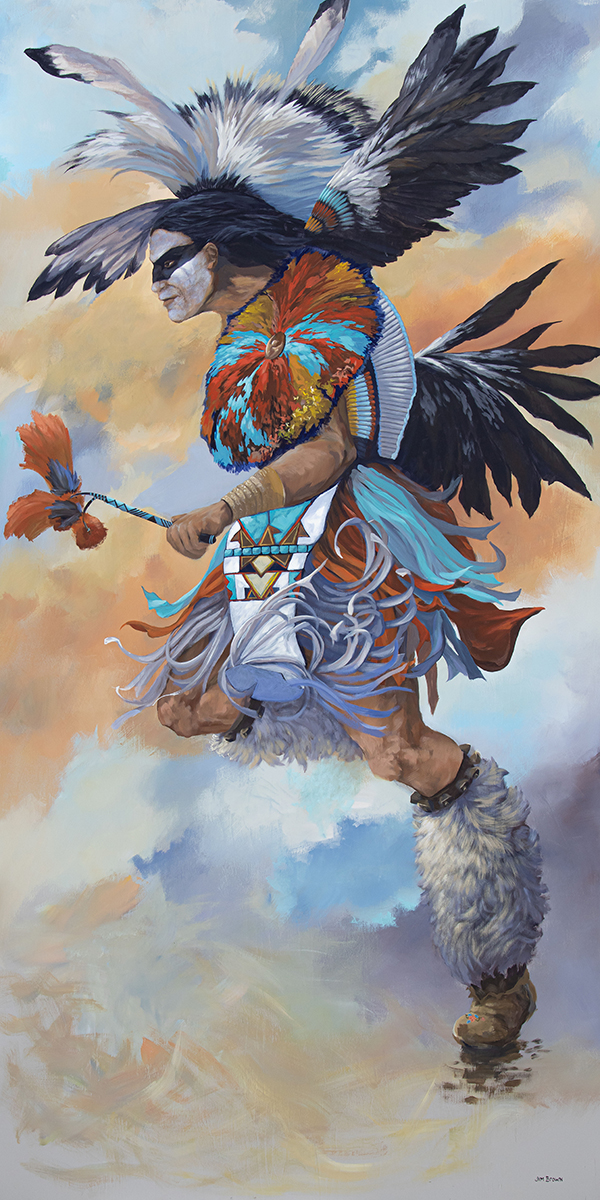
“The first observation of this dance is how the colorful regalia and movements are vibrant and full of life. This mirrors what life can be, when you push past the struggles and dark times and find what is good with what we have been given.
The sunrise gives us hope for what the day brings us and the sunset is a celebration of the accomplishments since the first morning glow. The dance is your spirit that moves you forward."
Men’s Fancy Dancers
Fancy dance, Pan-Indian dancing, Fancy Feather or Fancy War Dance is a style of dance some believe was originally created by members of the Ponca Tribe in the 1920’s and 1930’s, in an attempt to preserve their culture and religion. It is loosely based on the war dance. Fancy dance was considered appropriate to be performed for visitors to Reservations and at "Wild West" shows. But today, fancy dancers can be seen at many powwows across the nation and even the world.
Men's fancy dance is flashy, colorful and highly energetic. It requires strength and stamina and is usually performed by younger men and boys. The drum can play a medium war beat, a ruffle, crow hop, and a fast beat. It is always expected that a fancy dancer should do a pose at each end of the beat. Some might do splits or stop in mid-air. Male fancy dancers typically wear brightly colored regalia. Twin feather bustles are one of the hallmarks of modern fancy dance regalia, along with a beaded bodice, leggings or breech cloth and side tabs (most popular), bells just below the knees, Icelandic sheep hair or also known as "Goats", moccasins, a roach with two feathers (most wear a roach rocker which rocks the feathers with the dancer's movements), beaded cuffs, beaded headband, and other feathered or beaded accouterments. The regalia often has a fringe of many colors. The old style regalia is making a comeback.
The women's fancy shawl dance represents the opening of a cocoon when the butterfly emerges. The shawl is usually the most extravagant piece. The fringed shawls are colourful and flashy, often featuring embroidery or ribbon work. The fringe on the shawl have movement that coincides with the dancer. The dancers usually wear beaded or appliqued designs, and beaded hairpieces. Chokers, earrings, bracelets, and eagle plumes are usually worn as well. Elaborate moccasins and leggings complete the regalia. The practice of women's fancy shawl dance is far more recent than that of men's fancy dance. It wasn't until fancy dance had existed for several decades that women began to participate.
Information provided by Elder Lance Scout, Kainai - Blood Tribe
References:
Ellis, Clyde. A Dancing People: Powwow Culture on the Southern Plains. Lawrence: University of Kansas Press, 2003. ISBN 0-7006-1274-2.

